University of California, San Diego
Physics 7 - Introduction to Astronomy

 |
Physics 7 Lecture Summary #2
|  |

Astronomy is among the oldest of the sciences. When Stoneage humans turned
to an agrarian way of life and began to settle into communities, their
interest must naturally have turned to the "heavens":
- The seasons became important; during different times of the year,
different stellar patterns appear in the sky. In the spring,
Virgo and her
accompanying constellations signalled the time to prepare the earth,
to plant crops, and to be wary of floods. In the fall,
Orion rises
to indicate time to harvest and to prepare for winter.
-
The approximate equivalence of the human menstrual cycle and the 30 day
orbital period of the moon which produces
lunar phases led to the
belief that the heavens, and the moon in particular, were related to fertility.
-
To early humans facing an uncertain and changeable future, the constancy of
the heavens must have suggested perfection and certainly led to deification
in many cultures.
-
We may expect that
eclipses
would have been especially frightening to early humans. After predicting
the seasons, eclipse prediction may have been one of the earliest astronomical
activities.
 Stonhenge
constructed between 3100-2000 BCE on England's Salisbury Plain may have
been a Stoneage
astronomical site (observatory is too strong a word), at
least in part. Certainly the alignment of the "heelstone" with the rising
Sun on Midsummer's Day (June 21, the Summer Solstice) represents a true
astronomical alignment, and many other Megalithic sites have similar
alignments. In Stonehenge Decoded, astronomer Gerald Hawkins argued
that there exist a large number of astronomical alignments, though further
study suggests that many of these are fortuitous.
Stonhenge
constructed between 3100-2000 BCE on England's Salisbury Plain may have
been a Stoneage
astronomical site (observatory is too strong a word), at
least in part. Certainly the alignment of the "heelstone" with the rising
Sun on Midsummer's Day (June 21, the Summer Solstice) represents a true
astronomical alignment, and many other Megalithic sites have similar
alignments. In Stonehenge Decoded, astronomer Gerald Hawkins argued
that there exist a large number of astronomical alignments, though further
study suggests that many of these are fortuitous.
Cosmologist Fred Hoyle has suggested that Stonehenge may have been used to
keep track of the solar-lunar eclipse cycle. Far outside the still partially
standing ring of Sarsen Stones is a
ring of 56 holes, known as the
Aubry holes. Hoyle has suggested that movement of a marking stone by 3
positions each time the Sun rose over the heelstone (or by one position
three times yearly) would complete a circle in 18.67 years -- approximately
the period for the "nodes", the intercepts of the lunar and solar paths in
the sky, to complete a cycle.
Certainly ritual
use of Stonehenge would have been more important that its astronomical
functions and much of this interpretation must remain speculation. We may
be certain, however, that Stonehenge was indeed constructed by Stoneage humans
without the assistance of alien astronauts as suggested in some
pseudo-scientific books. Visit the
Complete Stonehenge
Eastern observers, notably the Chinese, kept careful track of events in the
skies, particularly the appearance of "guest stars" -- comets, novae and
other transients. Chinese records of the guest star that we now call
Comet Halley can be traced back to 240 BCE and possibly as early as
1059 BCE.
One of the most important Chinese records is of a
guest
star
that was bright
enough to be seen during the daytime for nearly a month in the
constellation that we call Taurus in July 1054. We believe this to be the
supernova explosion that gave rise to the
Crab Nebula and our knowledge of the date of the explosion itself is
a very important key in understanding the deaths of massive stars.
This event was also chronicled by the Anasazi in
Chaco Canyon
and by Native Americans elsewhere, but is curiously absent from European
records in the Middle Ages.
As the above suggests,
Archaeoastronomy is an active and exciting field of research.
Western scientific history begins with the ancient Greek civilization about
600 BCE.
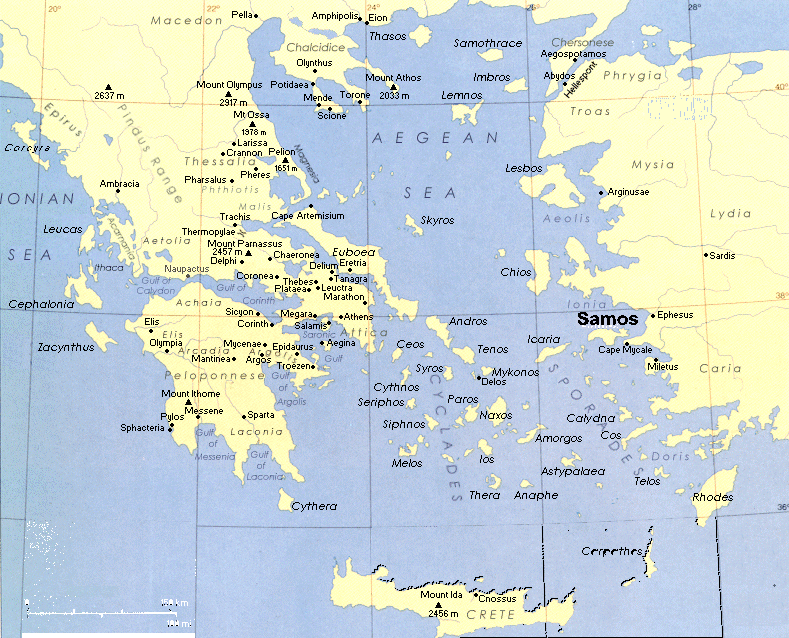
The Ionian region of Asia Minor appears to have been a site of
particular philosophical/scientific/mathematical activity for several
centuries.
We will review the progress of science by highlighting a few key
natural philosophers, scientists and mathematicians. As Isaac Newton
said,"If I have seen further, it is by standing on the shoulders of
Giants."
Most famous for his
theorem, little is known of his actual work. He founded a school
(some would call it a cult) of natural philosophy and mysticism that
attracted many followers. The Pythagoreans lived by a strict regimen
including vegetarianism, silence for the first 5 years of membership, and
anonymity with respect to personal accomplishments (so that it is difficult
to know what to ascribe to Pythagoras as opposed to his followers). The
Pythagorean Theorem was actually known to the early Babylonians but it may
be that Pythagoras was the first to prove it. The Pythagoreans recognized the
existence of irrational numbers and were interested in the relationship
between music and mathematics.
Pythagoras developments in astronomy built upon those of Anaximander from
whom, apparently, came the idea of perfect circular motion. The Pythagoreans
believed that the planets were attached to crystalline spheres, one for each
planet, which produced the
Music of the Spheres. These spheres were centered on the Earth, which
was itself in motion. Pythagoras is also credited with recognizing that the
"morning star" and "evening star" are both the planet Venus.
Aristotle was a student of Plato, founding
his own school of Natural Philosophy, the Lyceum, in Athens about 335 BCE.
Aristotle's philosophy involved the qualitative study of all natural
phenomena, pursued without the aid of mathematics which was deemed to be
too "perfect" for application on an imperfect terrestrial sphere.
In Aristotelian cosmology, the "imperfect" Earth was situated
at the center of the Universe (Solar System). It was composed of the four
elements: earth, air, water, and fire, each of which sought its natural
place in the Universe (e.g. earthen bodies fall to Earth, rain falls
from the sky, travelling through rivulets, to streams, to rivers and finally
to the sea). Aristotle adopted Pythagoras' model of concentric spheres for
the planets, but deduced that the Earth must be immobile. Aristotle's Natural
Philosophy was embodied in the writings of St. Thomas Aquinas and became the
foundation of Church doctrine and University instruction in medieval times.
Aristarchus
concluded that the Solar System must be heliocentric following his geometrical
estimates of the
relative sizes and distances of the Earth, Moon and Sun. His geometrical
methods were perfectly correct, but the required observations of the
exact time of first and third quarter moon and the duration
of lunar eclipse were beyond the instrumental capabilities of his era.
He calculated that the Sun is about twenty times farther away than the moon,
about 20 times larger than the moon and ten times bigger than the Earth.
Unfortunately, all of Aristarchus work was lost in the great fire in
Alexandria which destroyed the magnificent
library and its records of Greek science and culture.
A lunar crater bears his name
in recognition of his accomplishments.
Eratosthenes was a mathematician and geographer. He developed a
map of the world, a method for finding prime numbers called
Eratosthenes' Sieve, and estimated the
circumference of the Earth. His method involved determining the direction
to the Sun in Alexandria at noon on the summer solstice and comparing this
with the fact that the Sun is overhead in Syene(Aswan), about 500 miles away.
Here are the results of a worldwide high school
recreation of Eratosthenes'
experiment along with
pictures of
how to do the experiment yourself.
Ptolemy, Alexandrian (Greek) mathematician, geographer, and astronomer,
developed the most sophisticated
mathematical model of the motions of the Solar System based upon the
geocentric (Earth-centered) model and the principle of perfect circular
motion. His model was quite complex in order to follow the details of
planetary motions, requiring circles (epicycles) upon off centered
circular orbits. His major astronomical work is known as
The Almagest. Here's how epicycles
work to produce
retrograde motion.
Ptolemy's
Geography remained the principal work in that field until
the time of Columbus.
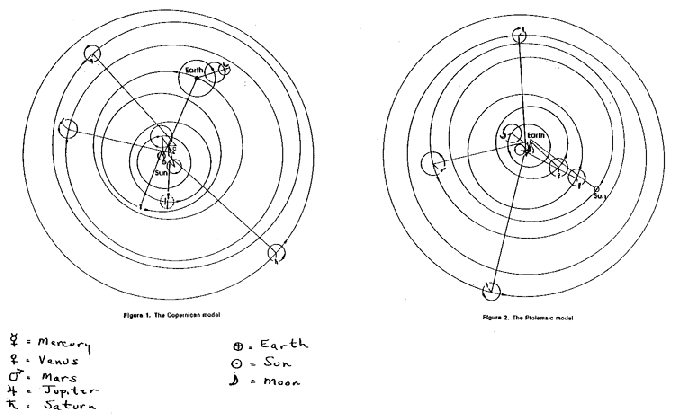
Copernicus Heliocentric Solar System vs. Ptolemy's Geocentric Model
Both models employed perfect circular motion with epicycles, equants ...
Copernicus studied mathematics and astronomy in Cracow and Italy, but spent
his life as a physician, attorney and church administrator. By Copernicus'
time, the Ptolemaic model could no longer reproduce the observed planetary
positions. Copernicus developed a
heliocentric model of the Solar System which retained the notion of
perfect circular motion, but placed the Sun at the center and established
the proper order of the planets outward from the Sun. Copernicus model, a
mathematical tour de force (not bad for an amateur), was published in
De Revolutionibus Orbium Celestium in 1543, the year of his death.
Danish astronomer Tycho Brahe is chiefly remembered for his meticulous
observations, made with
instruments of his own design before the advent
of the telescope. His early observations were carried out on the island of
Hven (now Swedish) where he built a pair of observatories,
Uraniborg and later Stjerneborg. In 1572 he observed a supernova and
in 1577 a comet; his parallax measures demonstrated that these objects were
beyond the moon and his measures of the brightness of the supernova showed
that it was clearly variable. Tyco's measurements of planetary positions
were at variance with the ptolemaic model and he developed his own
Solar System model in which the
Sun orbits the Earth, but the remaining planets orbit the Sun. Tycho's
abrasive nature ultimately led him into disfavor. He moved to the court of
Rudolph II in Prague in 1599 where he would pass along his observations to
Johannes Kepler. These became the basis for Kepler's Laws of Planetary
Motion.
There is an exquisite WebSite,
The Galileo Project about Galileo and his world put together by Rice
University's History department; many of the following links are to pages on
this site. Another excellent site at Lawrence Livermore Laboratory is
The Art of
Renaissance Science.
Galileo was the first "modern scientist". He argued that mathematics, rather
than being abstract perfection, is the true language of science. He performed
many revolutionary experiments in mechanics and other fields of physics.
Among his accomplishments in mechanics are:
-
development of the concept of inertia, later refined by Newton.
-
a variety of experiments on falling bodies which demonstrated that the
acceleration of gravity
 is independent of mass. There is no evidence that
Galileo actually dropped objects from the Tower of Pisa.
Rather, his experiments were conducted with an
inclined plane
as shown in this
animation.
is independent of mass. There is no evidence that
Galileo actually dropped objects from the Tower of Pisa.
Rather, his experiments were conducted with an
inclined plane
as shown in this
animation.
-
the first Theory of Relativity, valid for velocities much smaller than the
speed of light.
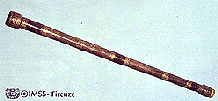 Using telescopes
of his own design and manufacture, Galileo also made many discoveries
in astronomy:
Galileo's observations suggested that the heavens were as "imperfect" as the
Earth; that other objects in the Solar System have satellites which orbit
around them, and that Venus passes through a full range of
phases. These observations led him to the conclusion that the
Copernican Model of the Solar System is preferable to the
Ptolemaic Model. Galileo published his views in Italian in Dialogues
Concerning the Two Chief World Systems in 1632. They were in direct
contradiction to the world-view taught by the Catholic Church, and he was
called before the Italian
inquisition in 1633. Galileo was forced to disavow his work, and was
sentenced to house arrest for the remainder of of his life.
Using telescopes
of his own design and manufacture, Galileo also made many discoveries
in astronomy:
Galileo's observations suggested that the heavens were as "imperfect" as the
Earth; that other objects in the Solar System have satellites which orbit
around them, and that Venus passes through a full range of
phases. These observations led him to the conclusion that the
Copernican Model of the Solar System is preferable to the
Ptolemaic Model. Galileo published his views in Italian in Dialogues
Concerning the Two Chief World Systems in 1632. They were in direct
contradiction to the world-view taught by the Catholic Church, and he was
called before the Italian
inquisition in 1633. Galileo was forced to disavow his work, and was
sentenced to house arrest for the remainder of of his life.
I highly recommend a tour of the Museum of the History of Science in Florence
if you can tear yourself away from the Renaissance Art; here is a
tour of the Museum
which has an extensive collection of
Galilean exhibits including the famous
middle finger.
Here is their
biography of Florence' greatest scientist.
Also highly recommended is a new book about Galileo and his daughter
Sister Maria
Celeste. Galileo's Daughter
by science journalist Dava Sobel, which sheds important new light on Galileo
and his beliefs, his family relationships, and the position of women in
Renaissance Society.
Kepler came to Prague to work with Tycho Brahe and his observational data.
Kepler was a mathematician and mystic, interested primarily in numerical
relationships among objects in the Universe. Using Tycho's unprecedentedly
accurate observations he made highly precise calculations of
planetary orbits. Although he could come very close to matching Brahe's
data with perfect circlular orbits, his faith in the data led him to continue
his calculations until he matched Tycho's accuracy. Kepler developed three
mathematical
rules
for the orbits of the planets:
-
The orbits of the planets are ellipses with the Sun at one focus.
-
The planets sweep out equal areas during equal times of the orbit.
-
The square of the orbital period is proportional to the cube of the planet's
distance from the Sun. (If you measure the period in Earth years and the
distance in Astronomical Units (A.U.),(1 A.U.= the average distance of the
Earth from the Sun), then Period2 = Distance3.)
Here's a page with some nice
animations of Kepler's Rules, and here is
another way to play with them.
Obviously Kepler's Rules require that the Sun be the center of the Solar
System, in contradiction with the Aristotilean ideal. The first rule
eliminates the circular motion which had been fashionable for 2 millennia.
The second replaces the idea that planets move at uniform speed around their
orbits,with the empirical observation that the planets move more rapidly when
they are close to the Sun and more slowly when they are farther away. The
third rule is a harbinger of the
Law
of Gravitation which would be developed by Newton in the latter part
of the 17th century.
Certainly the greatest classical Physicist, Newton developed the science of
mechanics as we know it. His first development was his
Laws of Motion. In order to perform mechanical calculations and
to understand Gravity, Newton invented a mathematical tool that he called
"fluctions" now known as
calculus. At the urging of Edmund Halley, Newton
published his Laws of Motion and analysis of Gravity in the Principia
Mathematica, probably the greatest physics text ever written, in 1687.
Halley, of course, wanted to use Newton's theories to analyze
orbits, particularly that of the comet of 1682 which now bears his name.
More about Newton's Laws in the next tutorial.
Other selected pioneers and milestones in the advance of Astronomy:
-
18th Century,
William Herschel discovered Uranus, a new planet beyond
Jupiter. Barely visible with the unaided eye, Herschel made the observation
with his
telescope .
-
Early in the 19th Century
Adams (English) &
LeVerrier (French)
independently calculated that there must be another planet beyond
Uranus that was producing small gravitational disturbances in Uranus'
orbit. First observed in 1846 by Hohan Galle, it was named Neptune.
(It was actually spotted earlier by Challis in Cambridge, but
Challis did not note his discovery until Galle reported his observation.)
-
1930 Clyde Tombaugh discovered Pluto.
-
1910 Harlow Shapley estimated the size of the Milky Way.
-
W. H.Pickering and Annie J. Cannon calculated the surface temperatures of the
stars.
-
Einstein (1905) developed the
Theory of
Special Relativity, based upon the
idea that light travels at the same speed in all frames of reference.
Modified Newton's Theory of Gravity by developing the General Theory of
Relativity (1916).
-
Cecilia Payne-Gaposchkin & Henry Norris Russell determined the
composition of stars.
- 1924
Edwin Hubble established that the Andromeda nebula and other "spiral
nebulae" are star systems like the Milky Way at great distances.
-
1929 Hubble & Milton Humason discovered that the Universe is expanding.
-
1938
Hans Bethe determined that the Sun's energy comes from thermonuclear
fusion reactions.
-
1940 Karl Jansky
observed that the nucleus of the Milky Way and other celestial objects are
strong sources of Radio Waves.
-
1948 George
Gamov developed the
Hot Big Bang Theory
of the origin of the Universe.
-
1950's chemical composition of the stars; stars build the heavy elements
via nuclear fusion reactions.
-
1954 Radio Galaxies
-
1960-63
Quasars
-
1960s X-ray
& Infrared
astronomy
-
1968 Jocelyn Bell (Burnell) & Anthony Hewish discovered
Pulsars

 Basic Forces & Light
Basic Forces & Light
 Introduction
Introduction
 Physics 7 Lectures
Physics 7 Lectures
 Physics 7 Home
Physics 7 Home
Conducted by Gene Smith, CASS/UCSD.
Comments?
You may send email to hsmith@ucsd.edu
Prof. H. E. (Gene) Smith
CASS 0424 UCSD
9500 Gilman Drive
La Jolla, CA 92093-0424
Last updated: 16 April 1999




 Stonhenge
constructed between 3100-2000 BCE on England's Salisbury Plain may have
been a Stoneage
astronomical site (observatory is too strong a word), at
least in part. Certainly the alignment of the "heelstone" with the rising
Sun on Midsummer's Day (June 21, the Summer Solstice) represents a true
astronomical alignment, and many other Megalithic sites have similar
alignments. In Stonehenge Decoded, astronomer Gerald Hawkins argued
that there exist a large number of astronomical alignments, though further
study suggests that many of these are fortuitous.
Stonhenge
constructed between 3100-2000 BCE on England's Salisbury Plain may have
been a Stoneage
astronomical site (observatory is too strong a word), at
least in part. Certainly the alignment of the "heelstone" with the rising
Sun on Midsummer's Day (June 21, the Summer Solstice) represents a true
astronomical alignment, and many other Megalithic sites have similar
alignments. In Stonehenge Decoded, astronomer Gerald Hawkins argued
that there exist a large number of astronomical alignments, though further
study suggests that many of these are fortuitous. 
 Pythagoras of Samos (~580-500 BCE)
Pythagoras of Samos (~580-500 BCE)  Aristotle (384-322 BCE)
Aristotle (384-322 BCE) Claudius Ptolemy (~85-165AD)
Claudius Ptolemy (~85-165AD)

 Nikolas Kopernig (Copernicus, 1473-1543)
Nikolas Kopernig (Copernicus, 1473-1543)
 Tyge (Tycho) Brahe (1546-1601)
Tyge (Tycho) Brahe (1546-1601)
 Galileo Galilei (1564-1642)
Galileo Galilei (1564-1642)
 is independent of mass. There is no evidence that
Galileo actually dropped objects from the Tower of Pisa.
Rather, his experiments were conducted with an
inclined plane
as shown in this
animation.
is independent of mass. There is no evidence that
Galileo actually dropped objects from the Tower of Pisa.
Rather, his experiments were conducted with an
inclined plane
as shown in this
animation.
 Using telescopes
of his own design and manufacture, Galileo also made many discoveries
in astronomy:
Using telescopes
of his own design and manufacture, Galileo also made many discoveries
in astronomy:
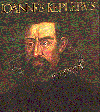 Johannes Kepler (1571-1630)
Johannes Kepler (1571-1630)
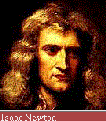 Isaac Newton (1642-1727)
Isaac Newton (1642-1727)

![]() Basic Forces & Light
Basic Forces & Light
![]() Introduction
Introduction
![]() Physics 7 Lectures
Physics 7 Lectures
![]() Physics 7 Home
Physics 7 Home